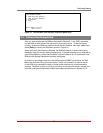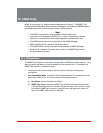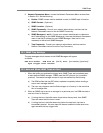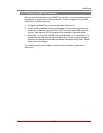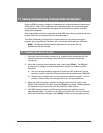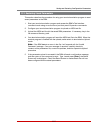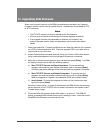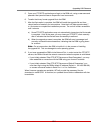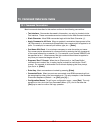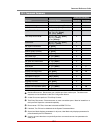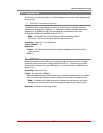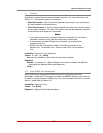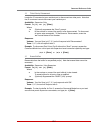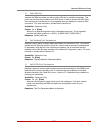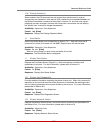
13-1
13. Command Reference Guide
13.1. Command Conventions
Most commands described in this section conform to the following conventions:
• Text Interface: Commands discussed in this section, can only be invoked via the
Text Interface. These commands cannot be invoked via the Web Browser Interface.
• Slash Character: Most RSM commands begin with the Slash Character (/).
• Apply Command to All Ports: When an asterisk is entered as the argument of the
/D (Disconnect) or /E commands (Erase Buffer) the command will be applied to all
ports. For example, to erase all port buffers, type /E * [Enter].
• Port Name Wild Card: It is not always necessary to enter the entire port name.
Port names can be abbreviated in command lines by entering the first character(s)
of the name followed by an asterisk (*). For example, a port named "SERVER" can
be specified as "S*". Note however, that this command would also be applied to
any other port name that begins with an "S".
• Suppress "Sure?" Prompt: When the /D (Disconnect) or /E (Erase Buffer)
commands are invoked, the /Y option can be included to override the "Sure?"
prompt. For example, to disconnect Port 8 without displaying the Sure prompt,
type /D/Y 8 [Enter].
• Enter Key: Most commands are invoked by pressing [Enter].
• Connected Ports: When two ports are connected, most RSM commands will not
be recognized by either of the connected ports. The only exception is the Resident
Disconnect Sequence (Default = ^X ([Ctrl] plus [X]).)
• Configuration Menus: To exit from a configuration menu, press [Esc]. The only
exception to this rule is the Copy Parameters Menu (/CP), and in that case the
[Esc] key is used to confirm the copy operation.



